2025 Author: Erin Ralphs | [email protected]. Last modified: 2025-01-22 21:14:16
Automatic transmission is very convenient. You can almost forget about the gear selector knob. But automatic transmission repairs are much more expensive, as for reliability, a lot depends on the brand of the car and the type of box. A significant role is played by the attitude of the driver, his driving style and service. Let's talk about why the automatic box kicks, what to do in this case and how to fix the problem.

Some general information
There are so many reasons why an automatic transmission starts to kick. For many, this immediately causes panic. But it is better to calm down, since the problem is often fixable and does not require intervention in the automatic transmission. I would like to immediately note that the machine is, of course, convenient, but it needs to be more carefully monitored. In 70% of cases, kicks appear precisely due to untimely maintenance of the node.
Someone considers it generally superfluous to change the oil and filters in the automatic transmission, and if there are kicks when switching to a higher or lowerthe transmission is immediately blamed on the manufacturer for the fact that the box is of poor quality, breaks, does not work well, etc. But if you follow the scheduled maintenance periods, then usually the automatic transmission works for a long time, depending on the brand of the car, from 100 to 300 thousand kilometers without a major repair.

Kicking automatic transmission: what to do?
The first thing you should pay attention to is the oil level in the automatic transmission and its condition. As noted above, many do not consider it necessary to change the ATF, but this is not true. All manufacturers recommend a complete replacement every 100-150 thousand kilometers, and a partial replacement every 60-80 thousand.
Another reason - the wrong oil is filled in. Many manufacturers indicate the required ATP in the instruction manual. Drivers do not always follow these recommendations and pour what they see fit. As a result, kicks, jerks, unstable operation or untimely gear changes occur. If you continue to drive like this, then you can get to the overhaul. In any case, the cause must be found as quickly as possible if you notice that the automatic box is kicking. What to do in this case? First of all, check the automatic transmission oil level. Often this is done on a warm running car. Much can be understood by the color of ATP. Darkening or lightening indicates that it's time to replace.
How to change the oil in a box?
There are also a number of rules to follow. First, if this is the firstreplacement after 100 thousand kilometers or more, then you need to change it entirely. Therefore, we first buy the original oil recommended for this automatic transmission by the manufacturer. The filter element, which is usually located in the pan of the box, is also subject to replacement. The first 400-500 kilometers after replacement, you need to drive calmly and pick up speed smoothly. The sparing mode implies the absence of slippage, prolonged stay in traffic jams, etc. loads on the automatic transmission. Often, after changing the oil, the question of why the automatic box kicks disappears. This is due to the fact that the shocks pass.

Friction disc wear
The so-called clutches are responsible for the timely stop of the gear in the automatic transmission. If the pressure or oil level in the system drops, they start to burn. As a result, they simply slip and do not perform their function. In this case, blackening of the clutch metal is typical.
Checking the performance of disks is extremely simple. To do this, install the car on a horizontal flat area. We move the automatic transmission selector to position N (neutral) and release the brake pedal. If the car moves forward, then this indicates burning and sticking of the friction discs. In this case they must be replaced. This is a full overhaul, and it will cost a lot. If it's them, then that's why the automatic transmission kicks when switching. Most likely, the ATP level was not controlled, or the oil was not changed at all. As a result, it lost its performance characteristics.and poorly lubricated clutches.

Radiator problems
The cooling system also plays a big role. During operation, the automatic transmission heats up quite a lot. For its cooling, an appropriate circuit is provided through which ATP circulates. Passing through the radiator, it returns to the automatic transmission and cools it. If the radiator pipes or the radiator itself are clogged, then the oil may boil. This often becomes the reason that the automatic transmission began to kick.
This problem appears only in severe operating conditions, when there is practically no air flow to the radiators. Therefore, if you are in traffic jams, ride mainly in the city at low speed and notice kicks that are absent on the highway, then the problem is most likely in the cooling.
First of all, you need to check the fans. They just might not turn on. In this case, the motor will also heat up. If the engine temperature is normal, and the automatic transmission shifts gears jerkily, then it is advisable to flush the radiator from the inside and out. Remember: the system is under pressure.
Electronics problems
If your automatic transmission kicks, the reasons, as you can see, can be very different. One of the most common is the incorrect operation of the electronic control unit. The so-called ECU is the "brains" of the car. If it does not work properly and delays the shift, or, conversely, sends the signal too early, then there may be jerks when shifting gears as inlow and high.

Very often this problem occurs after the overhaul of the automatic transmission. Some boxes need to be adapted after repair, if this procedure is not followed, then there will be shocks. But after a while they can pass. It is better, of course, to go to the service station, retrain the automatic transmission and drive comfortably further.
Jerking in a specific gear
It happens that automatic transmission shocks occur only in a certain gear. This often happens due to the fact that the oil channels in the hydraulic plate are clogged. Since each program has its own channel, such a scenario is possible. Especially if before that ATP was replaced in a system that was under pressure. All deposits from the sump could get into the valve body and clog its oil circuit. This problem is not critical and is solved by simply flushing the hydraulic block. But you definitely don't need to rush into it. Long-term driving at low pressure in the system can lead to failure of the clutch, which is responsible for this transmission. This is also due to oil starvation.

Solenoid block
Another fairly simple, but extremely responsible node. This unit is mounted on a hydraulic plate and consists of valves. With their help, ATP enters certain channels of the automatic transmission. Since they work on the principle of an electromagnet, the cause of their malfunction may be a wiring fault. And the block of solenoids itself is not eternal and is subjected to a banalmechanical wear.
On some car models, the valve body has the ability to leak. Moreover, this does not happen from under the gasket, but from the block body itself. In this case, it is recommended to simply replace it, since the automatic transmission may at one point be left without lubricating and coolant and simply stop.
Change to emergency mode
If the automatic transmission kicks when turned on for a long time and no action is taken, then it is likely that it will go into emergency mode. It differs depending on the make of the car. Sometimes you won't be able to go anywhere at all, but often the gear will not shift higher than second.
Emergency mode signals a serious problem. But it is not always the case. The fact is that the automatic transmission goes into an "accident" only after the ECU sends the appropriate signal. If the wiring is faulty or the pressure in the system is low, the ATP level has dropped or there is no cooling, all of these can be the cause. But even then, don't panic. It is best to perform a visual inspection of the wiring for mechanical damage. It is likely that the wire broke, and all the problems because of it. In any case, if you notice that the automatic transmission is kicking, take it to a trusted service for diagnostics.

A few important details
Many drivers simply do not follow the rules for operating automatic transmissions. This is especially true for the winter period. After all, not only the engine needs warming up, but also ATP, even thoughthat it is more fluid than motor oil. Therefore, if you are not a supporter of warming up the engine at idle, then do not turn the engine to too high a speed until the temperature arrow leaves the blue zone. Viscous oil does not provide proper lubrication and spreads worse through the system, you need to understand this and not force your automatic transmission.
So we figured out the main reasons why the automatic transmission kicks. What to do in such cases, you also know. The main thing is not to panic. All problems are fixable. Often, it is contaminated oil that has not changed for a long time that causes kicks. If you continue to drive like this, the situation will worsen. Therefore, if you could immediately limit yourself to cleaning the pan, changing the oil and filter, then after a while you will have to sort out the box. Keep an eye on the automatic transmission, and it will delight you with its long life.
Recommended:
Automatic transmission - how to use? Automatic transmission switching and control modes
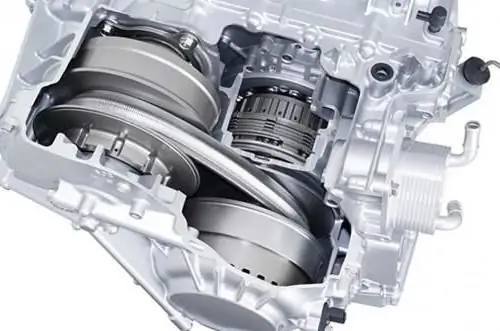
Today, many novice drivers, and motorists with experience, choose a car with an automatic transmission. Beginners are often afraid of the very need to shift gears while driving, experienced drivers have appreciated the possibilities of calm and measured movement in a car equipped with automatic transmission
Automatic transmission clutches (friction discs). Automatic box: device
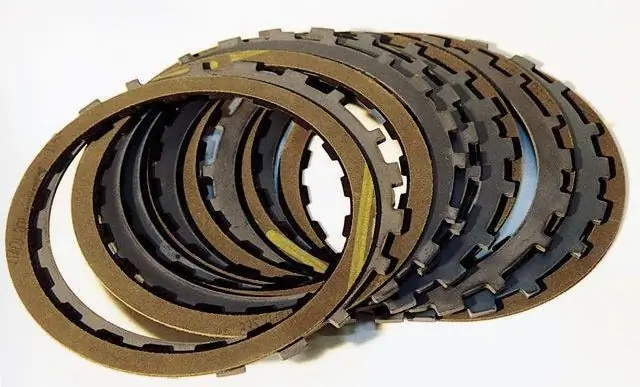
Recently, more and more motorists prefer automatic transmission. And there are reasons for that. This box is more convenient to use, does not require frequent repairs with timely maintenance. The automatic transmission device assumes the presence of a number of components and mechanisms. One of these are automatic transmission friction discs. This is an important detail in the structure of an automatic transmission. Well, let's look at what automatic transmission clutches are for and how they work
Automatic torque converter: photo, principle of operation, malfunctions, automatic transmission torque converter replacement
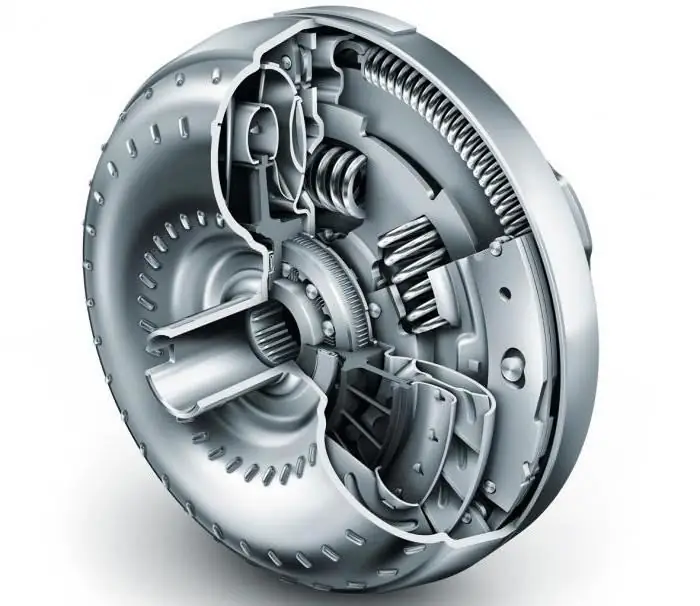
Recently, cars with automatic transmissions have become in great demand. And no matter how much motorists say that automatic transmission is an unreliable mechanism that is expensive to maintain, statistics say the opposite. Every year there are fewer cars with manual transmission. The convenience of the "machine" was appreciated by many drivers. As for expensive maintenance, the most important part in this box is the automatic transmission torque converter
The automatic transmission device of a car and the principle of operation. Automatic transmission types
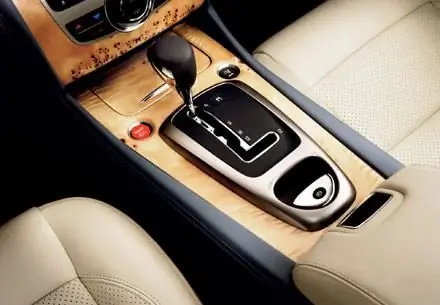
Recently, automatic transmissions are gaining more and more popularity. And there are reasons for that. Such a box is easier to operate and does not require constant “play” with the clutch in traffic jams. In large cities, such a checkpoint is far from uncommon. But the automatic transmission device is significantly different from classical mechanics. Many motorists are afraid to take cars with such a box. However, the fears are not justified. With proper operation, an automatic transmission will last no less than mechanics
Automatic transmission: oil filter. Do-it-yourself oil change in automatic transmission
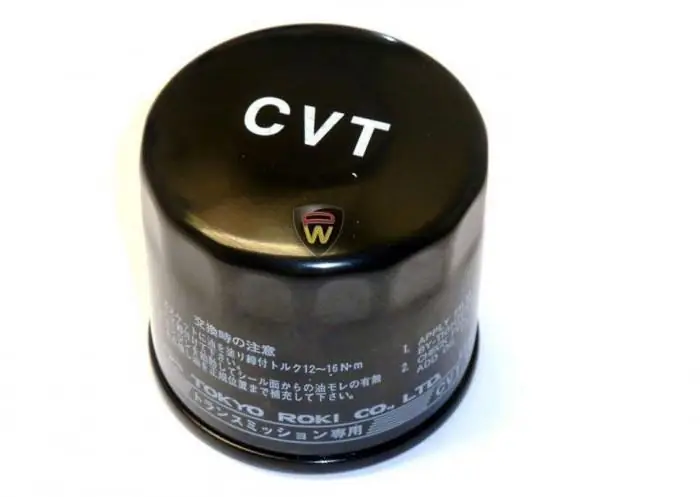
Modern cars are equipped with different gearboxes. These are tiptronics, CVTs, DSG robots and other transmissions

